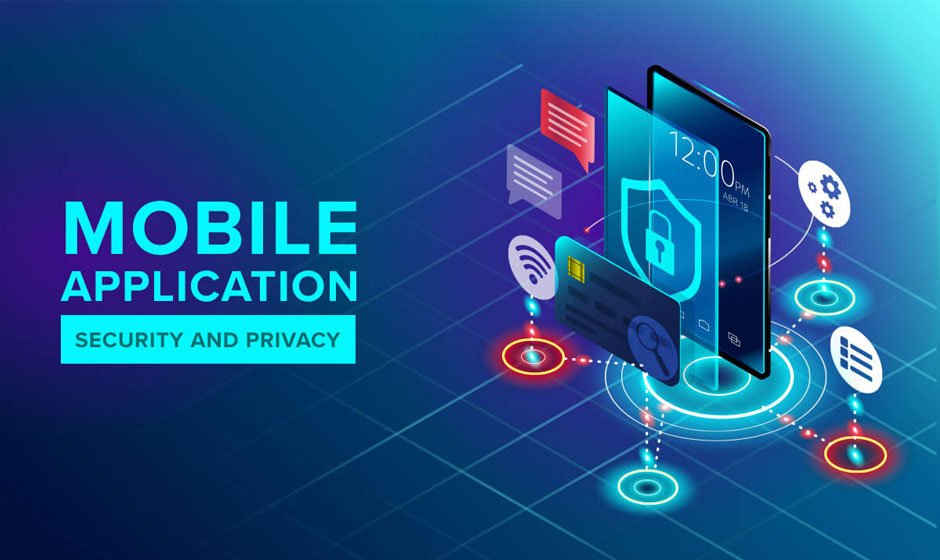In an increasingly digitized world, mobile applications have become integral to our daily lives and we can’t imagine to go on with our professional as well as personal lives without the assistance of these software applications. They offer convenience and accessibility, transforming how we communicate, shop, bank, and entertain ourselves and various other aspects where the assistance of technology has become a somewhat irreplaceable thing. However, as the dependency on mobile applications grows, so does the risk of cyber threats and other security issues related to it which involves the risk of compromise of user data security. Ensuring application security is not just a luxury but a necessity for safeguarding personal and sensitive information and has become a major element to be implemented in all businesses!
Understanding Mobile Application Security
Mobile application security refers to the protective measures applied to mobile apps to prevent unauthorized access, data breaches, and other forms of cyberattacks which can bes caused for the personal benefit of these hackers or some other malicious motives to harm the businesses. Unlike web applications, mobile apps present a unique set of challenges due to their platform-specific architectures, diverse operating systems, and varying device configurations which makes them more hard to crack down and hack into than web applications.
Security assessment is the cornerstone of protecting these applications. A mobile application security assessment is a comprehensive evaluation that identifies vulnerabilities, assesses risks, and provides recommendations to fortify the app against potential threats.
The Importance of Mobile Application Security Assessment
In an era where cybercrime is on the rise, the importance of mobile application security assessment cannot be overstated. Mobile apps often handle sensitive data such as personal identification, financial information, and even biometric details. A breach in security can lead to severe consequences, including financial loss, identity theft, and damage to a company’s reputation.
A mobile application security assessment ensures that the application is robust enough to withstand various forms of cyberattacks. It identifies vulnerabilities that could be exploited by attackers and provides actionable insights to developers to fix these issues before the app is released to the public.
Key Components of a Mobile Application Security Assessment
A thorough mobile application security assessment involves several critical steps:
- Threat Modeling
Threat modeling is the process of identifying potential threats to the mobile application. This involves understanding the app’s architecture, data flow, and the various entities interacting with the app. By mapping out the possible attack vectors, security professionals can anticipate potential threats and mitigate them before they become real issues.
- Static Analysis
Static analysis involves examining the app’s source code without executing it. This helps in identifying code-level vulnerabilities such as insecure coding practices, hardcoded credentials, and poor encryption methods. Static analysis tools scan the codebase for known vulnerabilities and provide developers with a report highlighting the areas that need attention.
- Dynamic Analysis
Dynamic analysis, on the other hand, involves testing the app in a runtime environment. This type of analysis simulates real-world attacks to assess how the app behaves under various conditions. Dynamic analysis helps in identifying issues such as insecure data storage, improper session management, and vulnerabilities in the app’s network communication.
- Penetration Testing
Penetration testing is a simulated attack on the mobile application to identify security weaknesses. Ethical hackers, also known as penetration testers, use various techniques to breach the app’s defenses. The goal is to uncover vulnerabilities that could be exploited by malicious actors. The findings from penetration testing are used to strengthen the app’s security posture.
- Security Code Review
A security code review is a detailed examination of the app’s source code by security experts. Unlike static analysis, which is automated, a security code review is a manual process where experts scrutinize the code for potential vulnerabilities. This step is crucial in identifying complex issues that automated tools might miss.
- Data Security and Encryption
Ensuring that data is securely stored and transmitted is a critical aspect of **mobile application security**. During the assessment, experts evaluate the app’s data handling practices, focusing on encryption methods for data at rest and in transit. This step helps prevent unauthorized access to sensitive information.
- Authentication and Authorization
Proper authentication and authorization mechanisms are essential for securing a mobile application. The assessment checks whether the app implements strong authentication methods such as multi-factor authentication (MFA) and whether it correctly enforces access controls to restrict unauthorized users from accessing sensitive features.
- Compliance with Security Standards
Depending on the industry, mobile applications may need to comply with specific security standards and regulations, such as the General Data Protection Regulation (GDPR) or the Payment Card Industry Data Security Standard (PCI DSS). The assessment ensures that the app meets these requirements, reducing the risk of legal penalties and enhancing user trust.
Challenges in Mobile Application Security Assessment
While a **mobile application security assessment** is essential, it comes with its own set of challenges. The diverse range of devices, operating systems, and network environments makes it difficult to account for every possible threat. Moreover, the rapid pace of development often leads to tight deadlines, which can result in security being overlooked in favor of faster release cycles.
Another challenge is the growing complexity of mobile apps, which often integrate with third-party services and APIs. These external dependencies can introduce vulnerabilities that are beyond the control of the app developers. Security professionals must take a holistic approach, considering all potential points of failure, including third-party integrations.
Best Practices for Strengthening Mobile Application Security
To ensure robust mobile application security, developers and security teams should adopt the following best practices:
- Implement Secure Coding Practices : Developers should follow secure coding guidelines to minimize vulnerabilities in the app’s codebase. This includes validating input, avoiding hardcoded credentials, and using secure libraries and frameworks.
- Regular Security Assessments : Security assessments should be conducted regularly throughout the app’s lifecycle. This ensures that new vulnerabilities are promptly identified and addressed.
- User Awareness and Education : Educating users about the importance of security features, such as strong passwords and MFA, can reduce the likelihood of successful attacks.
- Stay Updated on Security Threats : The threat landscape is constantly evolving, and new vulnerabilities are discovered regularly. Security teams should stay informed about the latest threats and update their security practices accordingly.
- Use Encryption : Encrypting sensitive data both at rest and in transit is crucial for protecting user information from unauthorized access.
Conclusion
In conclusion, mobile application security is an indispensable aspect of modern app development. With cyber threats becoming increasingly sophisticated, a comprehensive mobile application security assessment is necessary to safeguard user data and maintain trust. By understanding the importance of such assessments and implementing best practices, developers and security professionals can work together to create secure mobile applications that stand up to the ever-evolving landscape of cyber threats. The future of mobile app security lies in proactive assessments, continuous monitoring, and a commitment to protecting user privacy at all costs.





